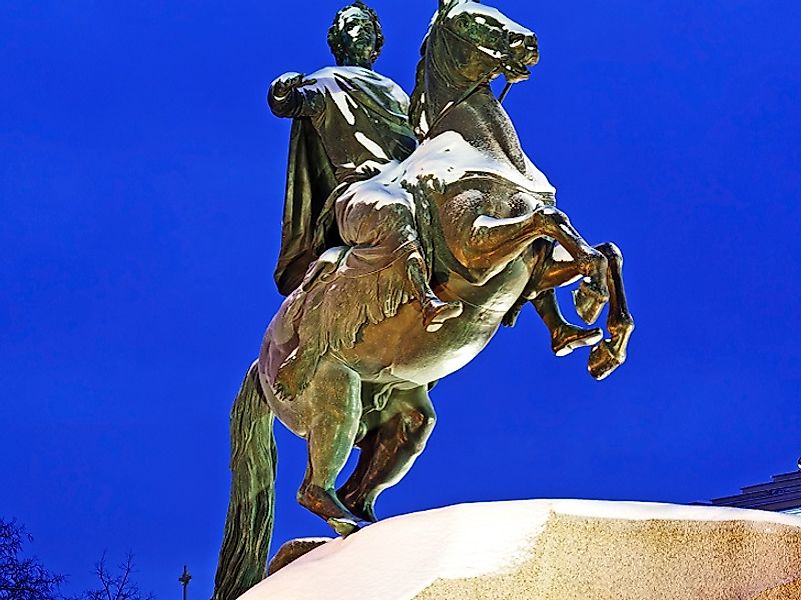Who Were Those Leaders Called Tsars?

Who is a Czar?
The term Czar, tsar or czar, is derived from the Latin word Caesar (referring to a ruler, equivalent in rank to the Roman Emperor, who holds the title by virtue of approval by another Emperor or a supreme ecclesiastical official such as the Pope). The title is usually associated with European Slavic monarchs, especially the supreme rulers of the Russian Empire. Derivatives of tsar, like “tsarina”, referring to the tsar’s wife, tsesarevich, referring to the heir apparent, tsarevich and tsarevna, the son and daughter of the tsar, resepectively, are also used.
The Czars of the Bulgarian Empire
The first ruler to officially adopt the title of “tsar”, doing so in 913, was Simeon I, the ruler of the First Bulgarian Empire. Simeon I reigned between 893 and 927. In 924 and again in 927, the Byzantine Empire also recognized the “tsar” title proclaimed by Simeon I. All of Simeon’s successors adopted this title thereafter until the defeat of the Bulgarian Empire by the Ottoman Empire in 1422. For the next five centuries, the sultan of the Ottoman Empire was often popularly referred to as the “tsar”, though this title was not formally adopted by the Ottomans. The formal use of the title of “tsar” was again revived following Bulgaria’s liberation from the Ottomans, and held as late as the World Wars, during the rules of Ferdinand I, Bois III, and Simeon II of Bulgaria
Tsars of Kievan Rus' and Serbia
The “Tsar” title was occasionally used to denote the kings of Kievan Rus', a group of states of East Slavic tribes under the rule of the Rurik dynasty. Yarsolav the Wise, a ruler of Kiev Rus', was entitled “tsar” by the Church officials of Kievan Rus'. However, in later years, the title was not popular among the other princes of the region. When the Mongols invaded Kievan Rus', the Mongol overlords were often denoted as “tsars” by the public of Kiev Rus’. In 1346, Stefan Dušan, ruler of Serbian Empire, formally adopted the title of tsar, which was then passed down to his successor. However, with the dissolution of the Nemanjić dynasty in 1371, though several other Serbian rulers were popularly referred by the title, official usage of the term became obsolete.
Tsars of Russia
The usage of the royal title of “tsar” reached its zenith during the rule of the Russian Empire. After his marriage to Sofia (Zoë) Palaeologus, an heiress of the Byzantine Empire, in 1472 Ivan III of Muscovy started referring to himself as the “tsar”. In his diplomatic correspondences, he often used the titles “imperator” (the Latin equivalent of tsar) and “kaiser” (the German equivalent of tsar). In 1547, the title of tsar was first officially adopted by Ivan IV, also known as Ivan the Terrible. Though theoretically Ivan IV wielded absolute power, in reality, the Orthodox Church and the Boyar Council had the power to greatly influence his decisions. To get rid of the church influence and achieve greater modernization and secularism for his empire, in 1721 the then-Russian Tsar, Peter I, discarded his official title of tsar and adopted the title of “Emperor of All of Russia instead. Though emperor remained as the official title of the Russian rulers succeeding Peter I, the public of Russia still continued to use the term “tsar” to refer to these rulers. Finally, with the Russian Revolution of 1917 and subsequent the execution of the last Russian Tsar, Nicholas II, by the Soviet Government in 1918, there was brought an end to the "Age of the Tsars" in Russia.
Modern Usage of The Title
In modern times, the term Czar or tsar has often been metaphorically used to designate world leaders or those with powerful positions of dictatorial natures. For example, the Speaker of the U.S. House of Representatives near the end of the 19th Century, Republican Thomas Brackett Reed, was often referred to as “Czar Reed” for his absolute control of the House of Representatives. Many high level civil servants in the U.S.A. and United Kingdom are also often, though obviously unofficially, designated as “Czars” for their dominant roles in their respective sectors of work.











